Samar’s inflation rate further slows to -0.9% in April
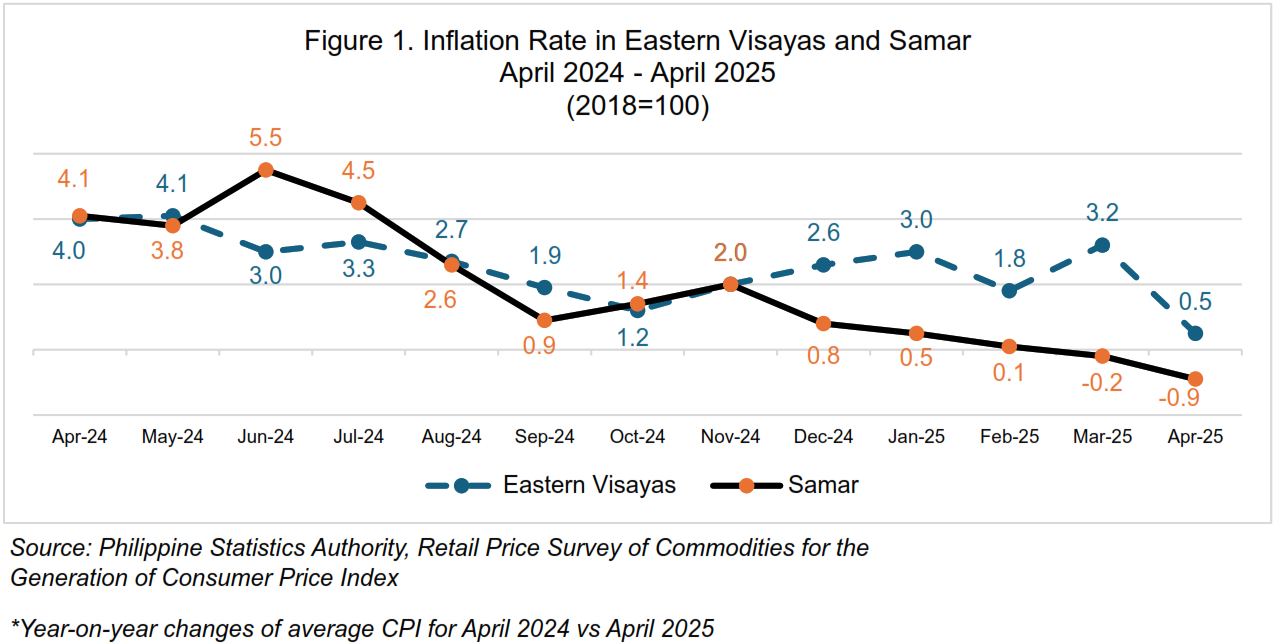
The inflation rate in Samar Province further declined from negative 0.2 percent in March 2025 to negative 0.9 percent in April 2025, representing a 5-percentage point decrease compared to April 2024. The year-to-date inflation rate was recorded at negative 0.1 percent, which is 1.1 percentage points lower than the regional average (Figure 1).
Top Three Commodity Groups Driving Samar’s Inflation Rate Deceleration
The slowdown in the province’s inflation rate was mainly driven by decelerations in the following major commodity groups:
a. Food and Non-alcoholic Beverages, which accounted for 65.0 percent, recorded a negative 3.0 inflation rate, which is lower by negative 0.9 percentage points from the previous month. This was mainly due to slower price increases in Food Sub-Commodity Group.
b. Housing, water, electricity, gas and other fuels, which contributed 23.5 percent, recorded an inflation rate of 0.1 percent, down from 1.1 percent in the previous month. This decline was mainly attributed to the slower increase in prices of electricity, gas and other fuels.
c. Transport, with a 4.7 percent share, registered an inflation rate of 2.4 percent, slower than the 2.9 percent in the previous month. The slowdown was primarily driven by the slower increase in prices of operation of personal transport equipment and fuels and lubricants for personal transport equipment.
Meanwhile, five commodity groups recorded no changes in their inflation rate:
1. Education Services, 7.7 percent;
2. Health, 2.8 percent;
3. Recreation, sport and culture, 1.4 percent;
4. Information and Communication, 0.2 percent; and
5. Financial Services, 0.0 percent
However, one commodity group observed an upward trend namely: Alcoholic Beverages and Tobacco with 9.1 percent inflation faster than last month’s inflation of 7.1 percent.
Inflation rate refers to the overall increase in prices over a specific period. It reflects the speed at which prices change between two time periods. Contrary to popular belief, low inflation does not necessarily mean that prices are decreasing; rather, it indicates that prices are still rising but a slower pace. This rate is derived from Consumer Price Index (CPI).
Food Inflation
The inflation rate for food further slowed down to negative 3.4 percent in April 2025, from negative 2.4 inflation rate in the previous month. In April 2024, food inflation was recorded at 8.4 percent.
Main Drivers of the Downward Trend in Food Inflation
The downward trend in Food Inflation in April 2025 was primarily attributed to a slower increase in Cereals and Cereal Products, from negative 10.3 percent in March 2025 to negative 13.6 percent in April 2025. Additionally, the inflation rate for Ready-made food and other food products slowed down from 4.4 percent to 2.9 percent.
Conversely, the following food sub-commodity groups showed accelerated inflation rates in April 2025 compared to the previous month:
1. Fruits and Nuts, from negative 12.7 percent to negative 10.5 percent;
2. Fish and Seafood, from 5.4 percent to 6.9 percent;
3. Meat and Other Parts of Slaughtered Animals (ND), from 8.5 percent to 9.4
percent;
4. Sugar, Confectionery and Desserts (ND), from negative 4.7 percent to negative
4.0 percent;
5. Milk, other Dairy Products and Eggs (ND), from 0.8 percent to 1.0 percent; and
6. Vegetables, Tubers, Plantains, Cooking Bananas and Pulses (ND), from 3.2
percent to 3.3 percent.
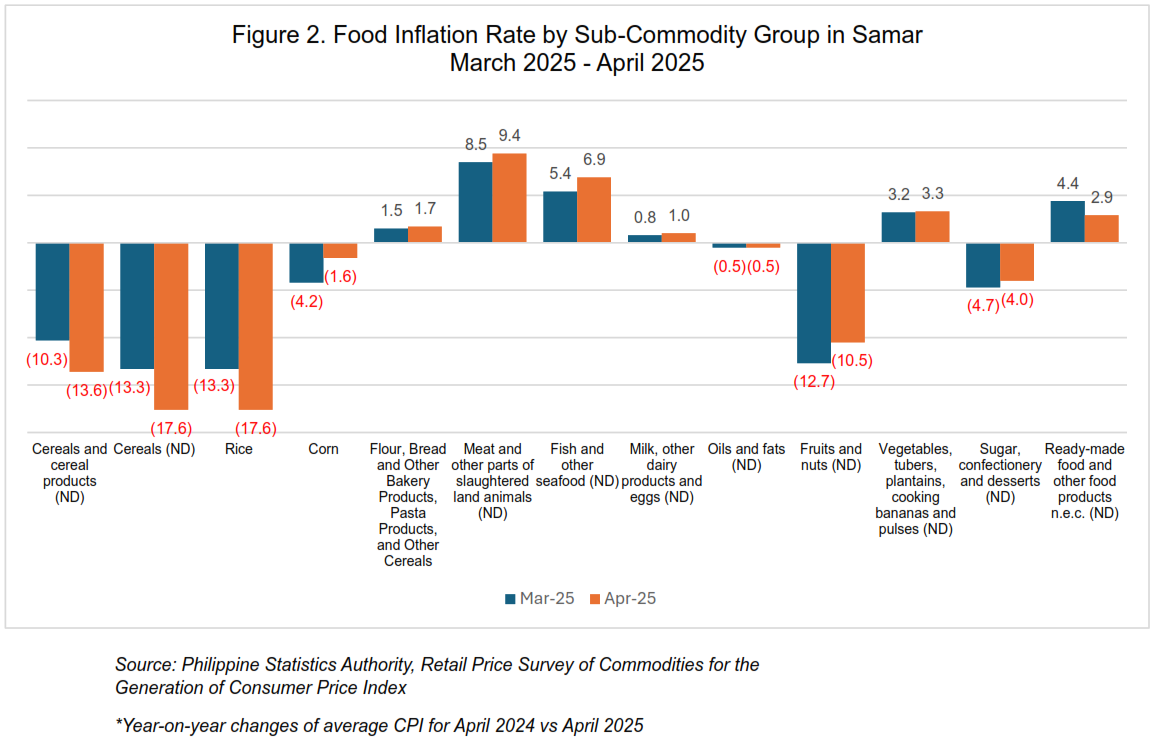
Consumer Price Index
In April 2025, the Consumer Price Index (CPI) decreased at 127.8, indicating a 27.5 percent increase in the overall basket of goods from the 2018 base year. Relatively, this also represents a 1.1 percent decrease from the same month last year (Figure 3).
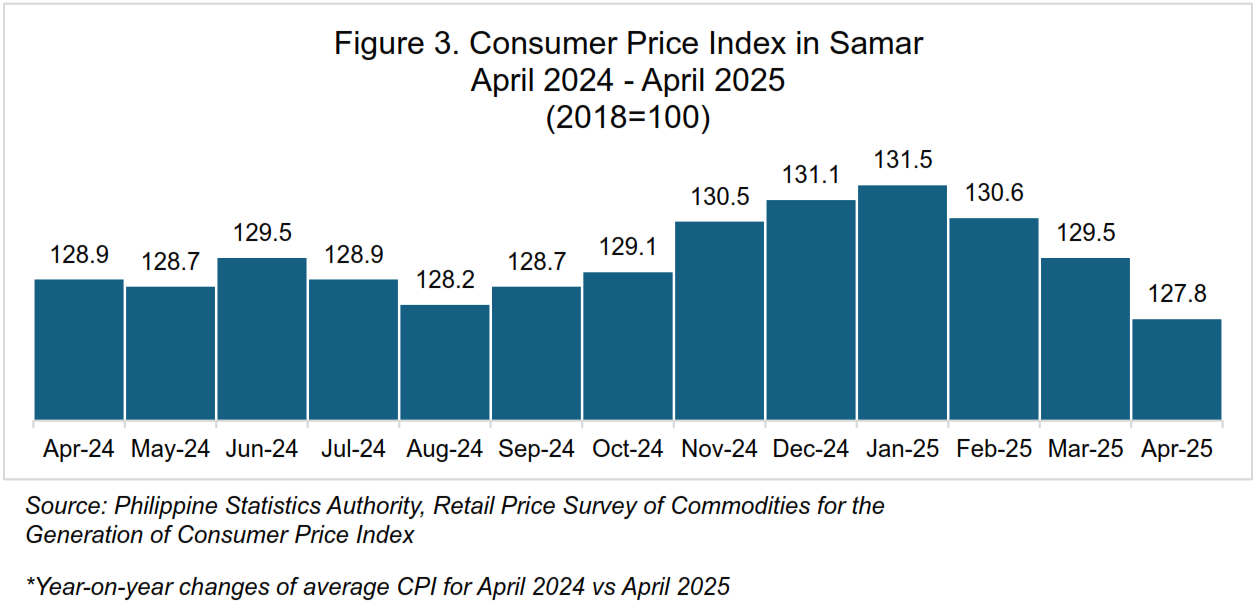
Purchasing Power of the Peso (PPP) increased at 0.78 in April 2025
The Purchasing Power of the Peso (PPP) in Samar increased 78 centavos. This means that a peso in 2018 is equivalent to 78 centavos in April 2025. (Figure 4)
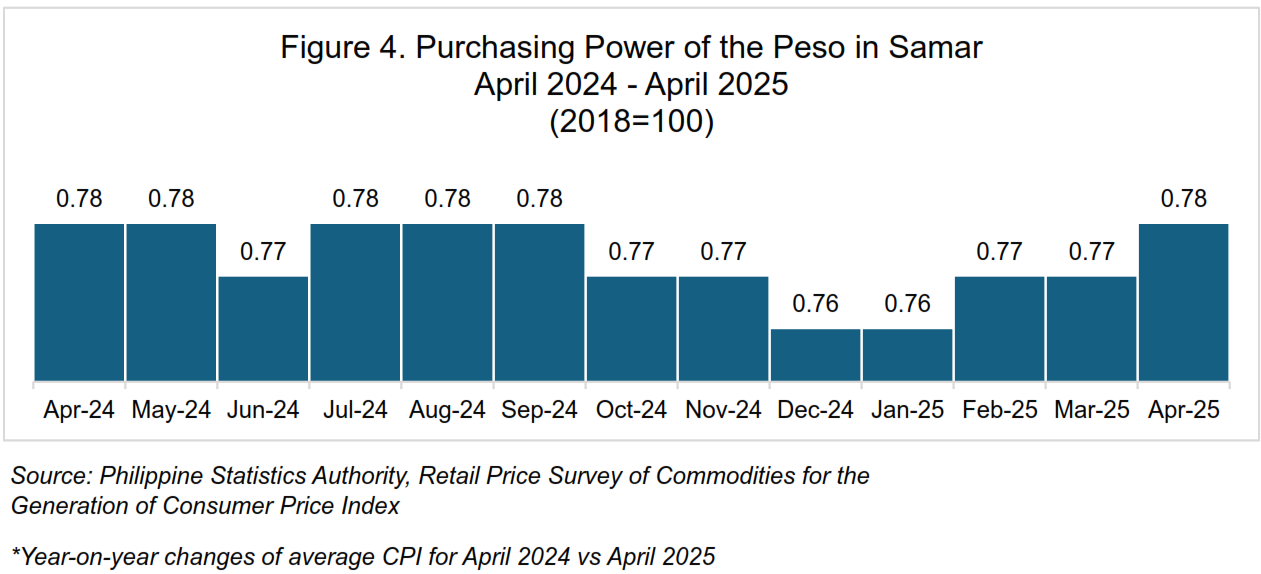
Table 1. Consumer Price Index and Inflation Rate for All Income
Households in Samar by Commodity
March 2025 – April 2025
(2018=100)
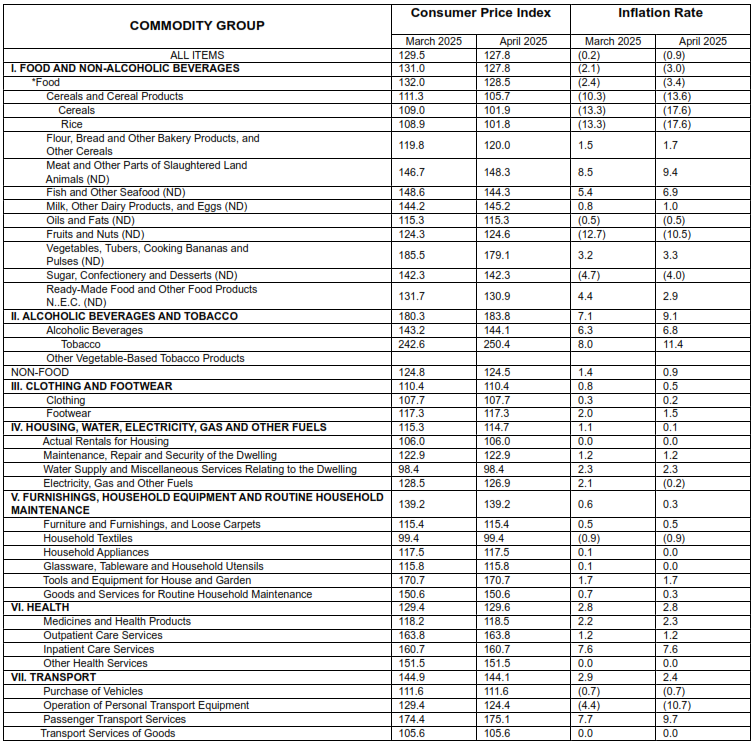
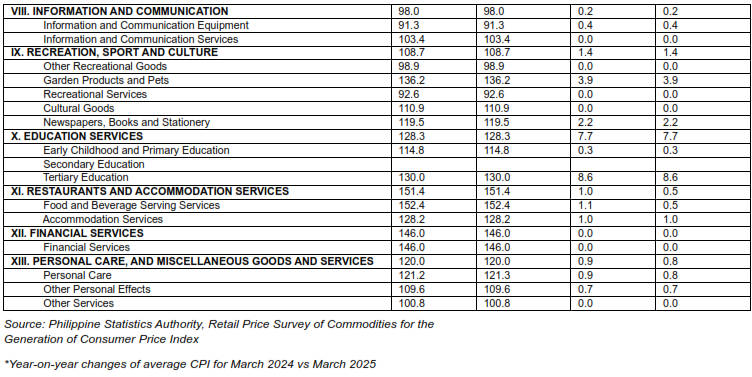
TECHNICAL NOTES
Base Period – it is a reference period, usually a year, at which the index number is set to 100. It is the reference point of the index number series.
Consumer Price Index – is an indicator of the change in the average retail prices of a fixed basket of goods and services commonly purchased by an average Filipino household. It shows how much on the average, prices of goods and services have increased or decreased from a particular reference period known as a base year. The formula used in computing the CPI is the weighted arithmetic mean of price relatives, a variant of the Laspeyres formula with fixed base year period weights as shown below:
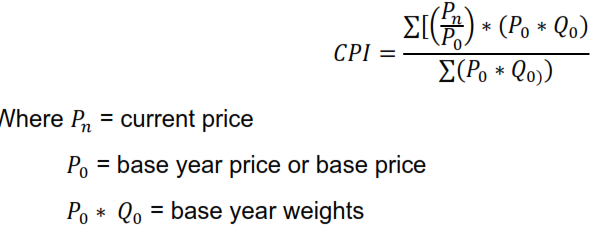
Headline Inflation – measures changes in the cost of living based on movements in the price of a specified basket of major commodities. It refers to the annual rate of change or the year-on—year changes in the CPI.
Inflation Rate – refers to the annual rate of change or the year-on-year changes of the CPI expressed in percent. Inflation is interpreted in terms of declining purchasing power of money. Inflation rate is computed as:

Market Basket – For CPI purposes, market basket is a term used to refer to a sample of goods and services that are commonly purchased and bought by an average Filipino household.
Price – The amount or value paid in exchange for the commodity or a service rendered.
Purchasing Power of the Peso (PPP) – Shows how much the peso in the base period is worth in the current period. It is computed as the reciprocal of the CPI for the period under review multiplied by 100.

Retail/Consumer Price – Refers to the price at which a commodity is sold in small quantities for consumption.
Unit of Measure – Refers to which a commodity is customarily traded in the market. The unit of measure is used as the basis for pricing for consistency and to prevent misunderstanding between the price collector and the respondent.
Weight – A value attached to a commodity or group of commodities to indicate the relative
importance of that commodity or group of commodities in the market basket.
RIZA N. MORALETA
Chief Statistical Specialist

